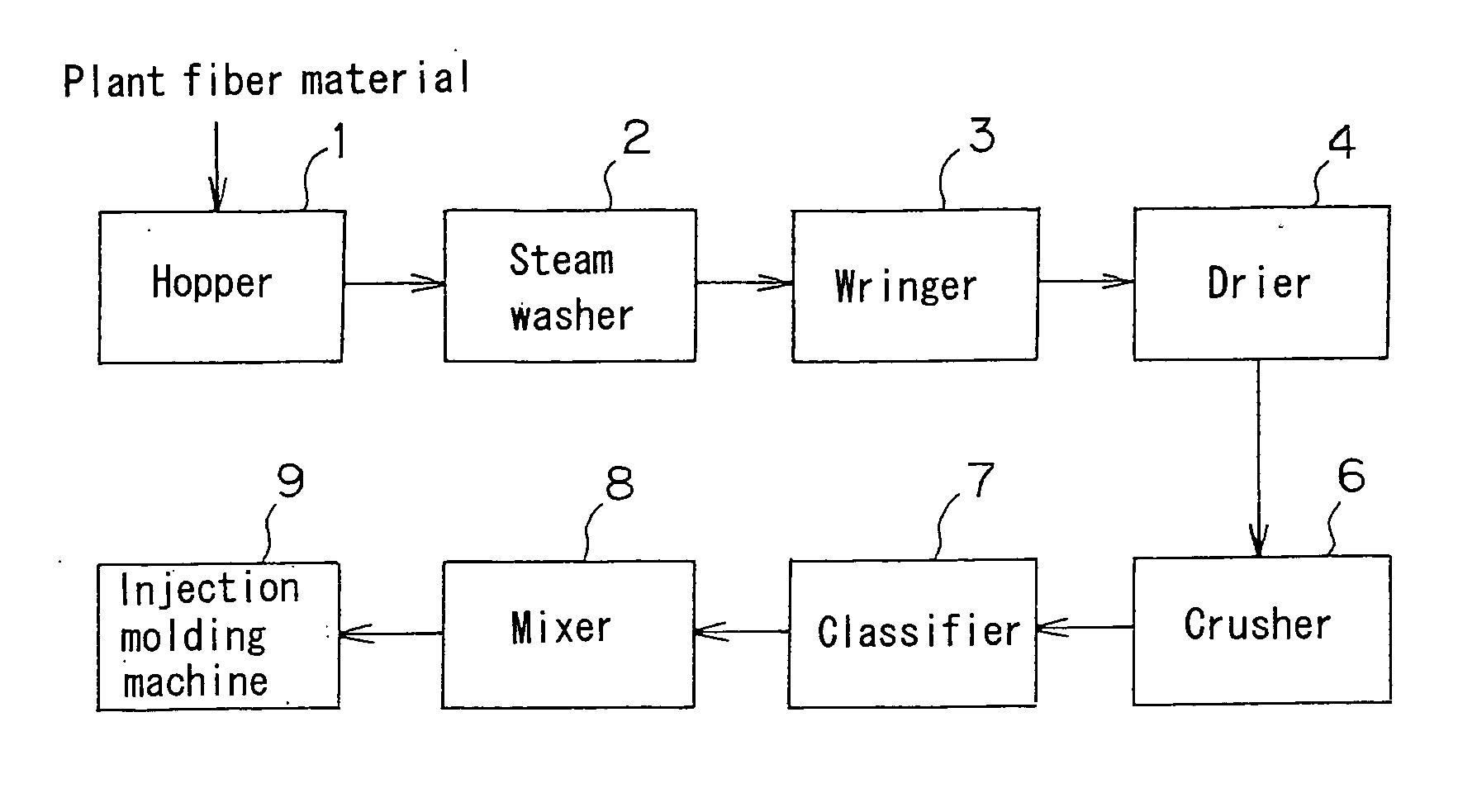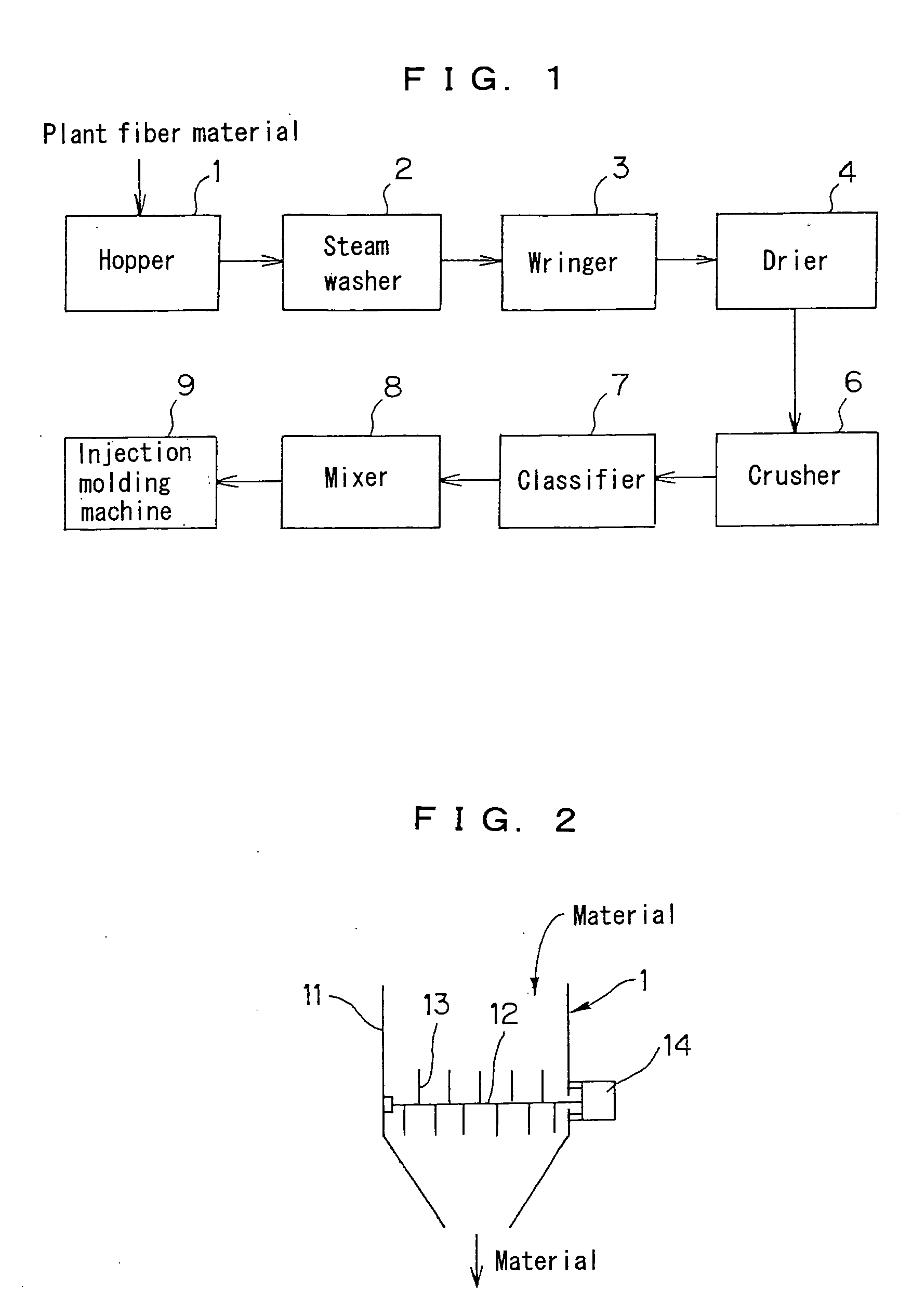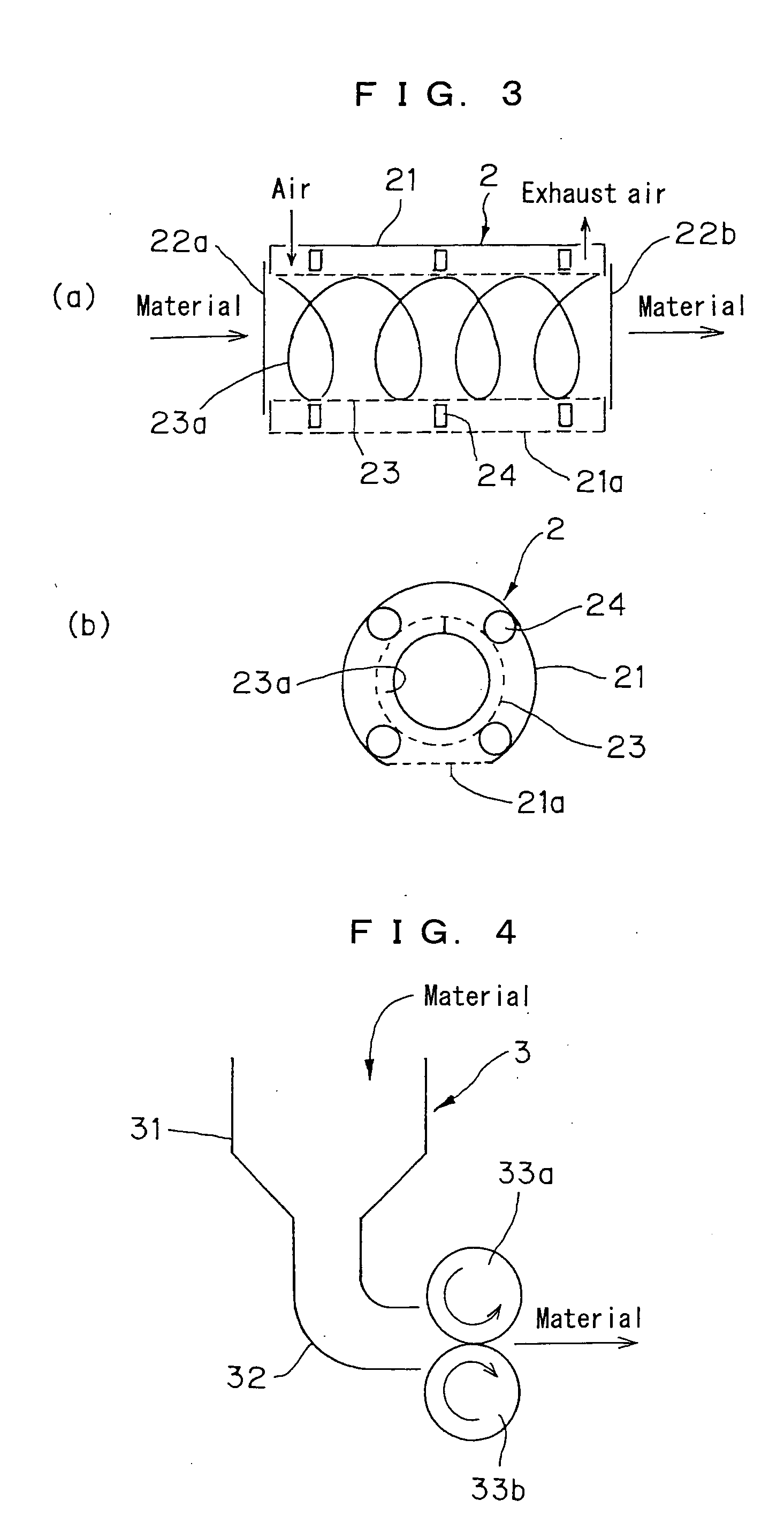Process for producing biodegradable fiber molding
a biodegradable fiber and molding technology, applied in the field of biodegradable fiber material molding, can solve the problems of inability to mass produce, inability to meet the needs of mass production, and high production cost of biodegradable plastics, so as to achieve mass production inexpensively, reduce production cost, and reduce production cost
- Summary
- Abstract
- Description
- Claims
- Application Information
AI Technical Summary
Benefits of technology
Problems solved by technology
Method used
Image
Examples
embodiment 1
Production of a Sphere
[0099] A plant fiber material powder with 60 to 200 mesh particle size and a water content of 8 weight % was made from thinnings of cedar using the machines from the hopper 1 to the classifier 7. 58 weight parts of the plant fiber material powder was mixed with 17 weight parts of plant binder powder uniformly. The mixture was uniformly added with 25 weight parts of water to be moisturized, then mixed by the mixer 8. Thus, a plant fiber molding material was obtained. A mixture of 97 weight % of corn starch, 2 weight % of xanthan gum and 1 weight % of tamarind seed gum was used as the plant binder powder.
[0100] The plant fiber molding material was put in the injection cylinder of an injection molding machine through the hopper of the machine, and injected in a mold in the ordinary way. Thus, a sphere having a diameter of 50 mm and weighing 72 g was obtained. The injection pressure was set at 103 MPa, the fastening force of the mold was set at 1,700 KN, and the ...
embodiment 2
Production of a Bowl
[0102] A plant fiber material powder with 60 to 200 mesh particle size and a water content of 5 weight % was made from bamboo using the machines from the hopper 1 to the classifier 7. 63 weight parts of the plant fiber material powder was mixed with 20 weight parts of plant binder powder uniformly. The mixture was uniformly added with 17 weight parts of water to be moisturized, then mixed by the mixer 8. Thus, a plant fiber molding material was obtained. A mixture of 98 weight % of corn starch and 2 weight % of xanthan gum was used as the plant binder powder.
[0103] The plant fiber molding material was put in the injection cylinder of an injection molding machine through the hopper of the machine, and injected in a mold in the ordinary way. Thus, a bowl weighing 65 g was obtained. The injection pressure was set at 83 MPa, the fastening force of the mold was set at 1,250 KN, and the pull out mold time was set at 45 seconds.
[0104] The bowl was buried in soil. It ...
embodiment 3
Production of a Pendant Top
[0105] A plant fiber material powder with 60 to 200 mesh particle size and a water content of 7 weight % was made from grass using the machines from the hopper 1 to the classifier 7. 73 weight parts of the plant fiber material powder was mixed with 14 weight parts of plant binder powder uniformly. The mixture was uniformly added with 13 weight parts of water to be moisturized, then mixed by the mixer 8. Thus, a plant fiber molding material was obtained. A mixture of 98 weight % of potato starch, 1 weight % of xanthan gum and 1 weight % of tamarind seed gum was used as the plant binder powder.
[0106] The plant fiber molding material was put in the injection cylinder of an injection molding machine through the hopper of the machine, and injected in a star-shaped mold for producing five moldings in the ordinary way. Thus, a star-shaped pendant top weighing 12 g was obtained. The injection pressure was set at 83 MPa, the fastening force of the mold was set at...
PUM
| Property | Measurement | Unit |
|---|---|---|
| Temperature | aaaaa | aaaaa |
| Temperature | aaaaa | aaaaa |
| Fraction | aaaaa | aaaaa |
Abstract
Description
Claims
Application Information
 Login to View More
Login to View More - R&D
- Intellectual Property
- Life Sciences
- Materials
- Tech Scout
- Unparalleled Data Quality
- Higher Quality Content
- 60% Fewer Hallucinations
Browse by: Latest US Patents, China's latest patents, Technical Efficacy Thesaurus, Application Domain, Technology Topic, Popular Technical Reports.
© 2025 PatSnap. All rights reserved.Legal|Privacy policy|Modern Slavery Act Transparency Statement|Sitemap|About US| Contact US: help@patsnap.com



